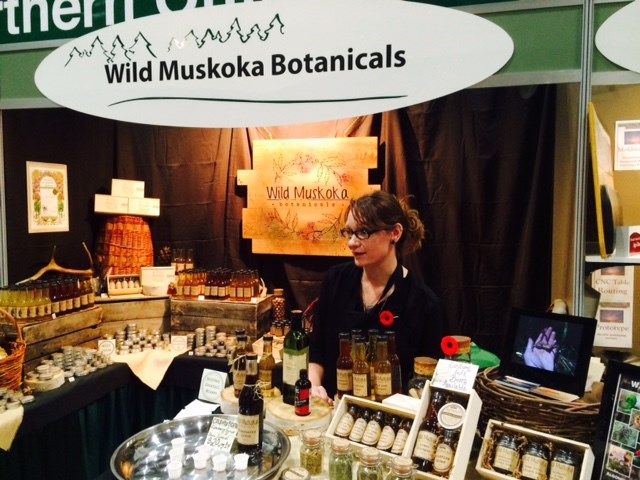Here's something you might want to try come spring --- harvesting your own food from surrounding bushland.
That's what Laura Gilmour of Wild Muskoka Botanicals has done.
She's a producer of artisan wild foods and traditional botanical medicines foraged locally.
" We're taking wild foods with all their amazing flavours which grow in the North Bay regions, Muskoka and Parry Sound regions and putting them in a form that people can use when cooking at home --- doing infused vinegars, syrups, spice mixes, pickles --- all different things people use on a regular basis but adding flavours of wild foods."
Gilmour was busy in her booth at the recent Royal Agricultural Winter Fair in Toronto, taking advantage of a government Fednor grant to be a part of the Northern Ontario Pavilion.
She does the whole process from start to finish.
"Yup, going out and harvesting the wild plants at their peak. The season can be very short so you have to know the few weeks that you can go out and pick one plant at it's peak, then the next one. We have a harvesting calendar that we follow from week to week throughout the growing season to harvest the leeks, the spruce tips and the sumac berries, then we take them into our kitchen and prepare them in a way that people can use them at home."
Gilmour's background is as a botanist, so she has a leg up on the rest of us. She's spent over 10 years mapping ecological systems and learning about plants, so over the years doing her professional work as an ecologist she learned where different plants grow and where they are abundant.
"Over the years I've kind of built a map in my mind where all of the different harvesting areas are, and I have some really wonderful people that give me access to their private property --- beautiful old farms and different people will give me tips like 'I have milkweed that grows on my property' or 'I have elderberries', and people welcome me to come on their property --- so I have a big map in my head."
![[object Object]](https://vmcdn.ca/f/files/baytoday/images/business/wild-botanicals-3-gilmour-turl-2016.jpg;w=400) Some of Wild Botanical's products. Photo by Jeff Turl.
Some of Wild Botanical's products. Photo by Jeff Turl. She urging people at the fair to try milkweed pods.
"Milkweed was actually on the noxious weed list for many years and it's a common, weedy plant so a lot of time farmers and other people are actually trying to get rid of it. People see milkweed growing on their property and are getting to know it because of Monarch butterflies. People have no idea that it's edible. It's actually one of my favourite wild vegetables. So that's one I've had a lot of fun sharing with people."
The Royal Agricultural Winter Fair is the world’s largest combined indoor agricultural and equestrian show. With over one million square feet of displays and competition facilities, The Royal draws in some 300,000 visitors annually. Thousands of entries are received each year from elite Canadian and International breeders, growers and exhibitors, including over 5,000 large and small animals.
FedNor spent $467,800 this year to support the Northern Ontario Agri-food Pavilion, which is designed to highlight exhibitors from across the region.
See related stories:
You haven't seen art like this before
Royal Agricultural Winter fair spotlights northern Ontario.



